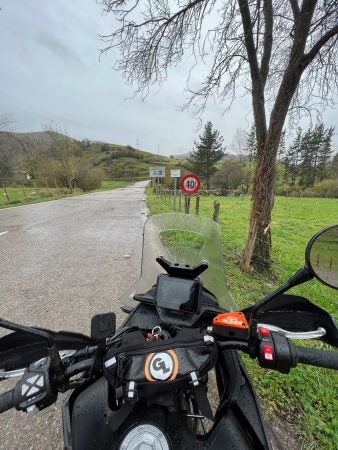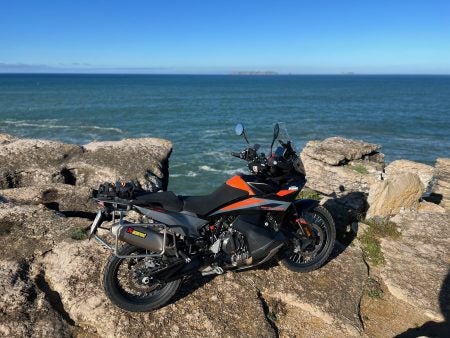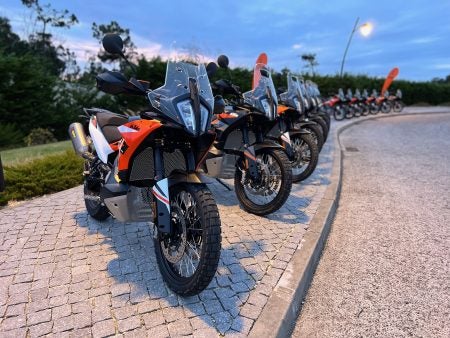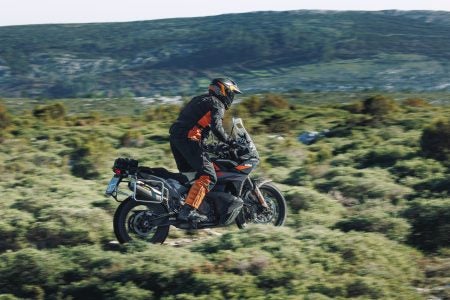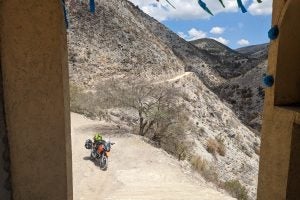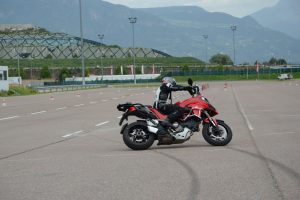This fall, KTM released their much-anticipated 890 Adventure update for the 2023 model year. This bike is a middleweight ADV machine that is designed to take on everything from city streets to gnarly off-road terrain.
I had a chance to swing a leg over one of these machines while the bike was still under embargo, and take it on a real-life test to the press launch in Obidos, Portugal.

Yeah, that’s a good route for a test ride! Image: Google Maps
The trip was 3,000 km long over seven days, both on- and off-road. The changing fall weather handed me sheets of torrential rain and cold temperatures, which were punishing for the rider but not for the machine.
The 890 Adventure will be available in two different colors, Black and Orange. Because the bike was still unreleased to the public, KTM sent me out on a completely black version with a pre-production windshield.
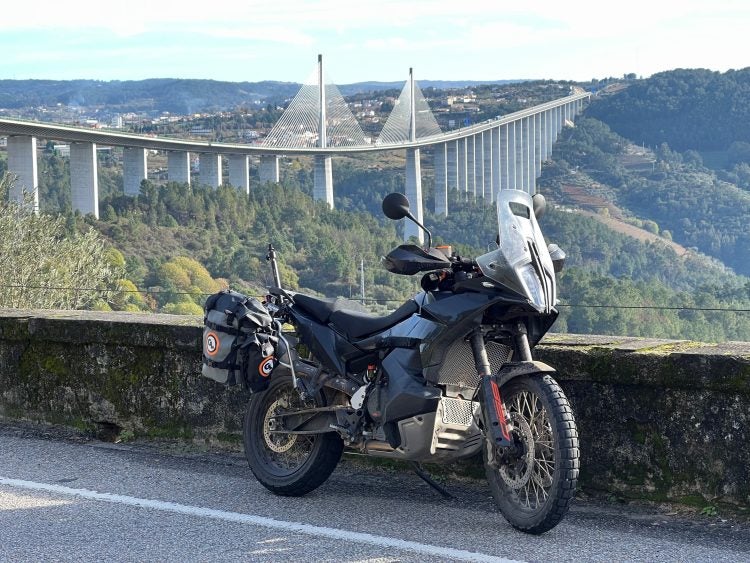
Paolo hits the streets in some spy shot livery! Photo: Paolo
The specs
The only differences between the standard Adventure and the KTM 890 Adventure R model are the suspension (adjustable 200 mm WP Apex fork on the 890 Adventure and 240 mm WP XPLOR on the R) and the front fender. The 890 Adventure is powered by an 889cc parallel-twin engine that produces 105 hp and 72 lb-ft (100Nm) of torque, same as before. Fuel capacity remains at 20 liters.
It clocks in at a dry weight of 196 kg (432 lb), fits a 21/18-inch wheel combo, with dual 320 mm brake discs up front (not the fancy Brembo ones like on the 1290 SAS). The seat has been redesigned to be more narrow, yet also more comfortable, with seat height ranging from 840-860 mm, adjustable according to rider height.
The 890 Adventure gets new Pirelli Scorpion STR tires; more offroad-capable compared to the previous model which was fitted with the Avon TrailRider v54.
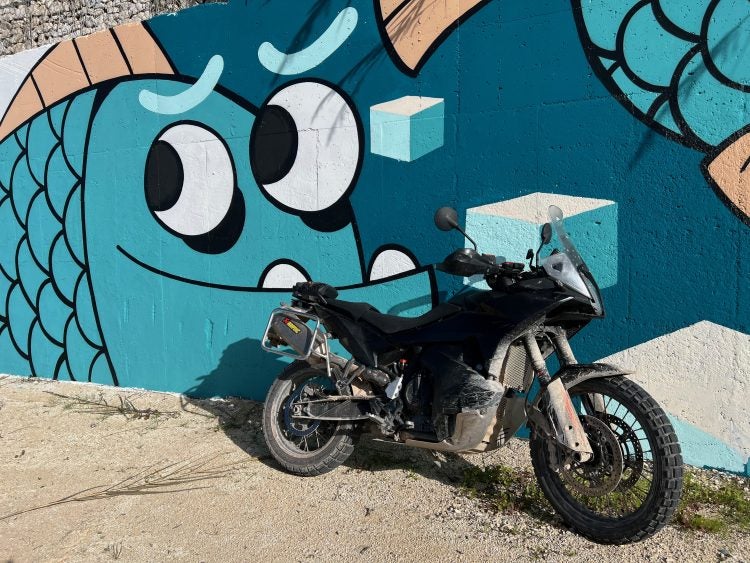
Photo: Paolo
The trip:
I arrived at the KTM facility in Mattighofen, Austria, on a Friday and set the bike up with an alarm system with GPS, provided to me by Patrolline, I left the next day, and I had to be tricky about it, to avoid getting spotted by photographers or keen motorcyclists with cameras. We wanted to keep the bike’s big reveal for the official media launch in Portugal.
It was raining as I left Austria, but I was more concerned about the cold, since temperatures could drop significantly this time of the year. The first part of the trip was a proper high-speed as I rode across Germany on the autobahn, the notorious German highway with no speed limits. No better place to test the new bike’s road manners!
I was quite familiar with the LC8c engine. I’d already clocked 50,000 km with the 2020 model; top speed and acceleration were what I expected. However, I found the aerodynamics and wind protection on the new model were a big step forward.

Photo: Paolo
The new windshield minimized the visor buffeting that most ADV helmets suffer. The windshield is high enough to shelter a tall rider’s head (I’m 6’2″), and there’s a hole in that allows air to pass through and stabilize the sun visor, especially at high speeds.
The newly-sculpted fairings and headlight also shelter the rider much better than the bodywork on the previous model. I felt more protected from the elements; even my legs were significantly less exposed to windblast at speed. Speaking of which, the bike peaked at 202 km/h (125 mph) with panniers on, and it was incredibly stable. Maybe it’s because of the aerodynamics, maybe because of the tires, but there’s almost no vibration in the handlebar while twisting the throttle on the highway.
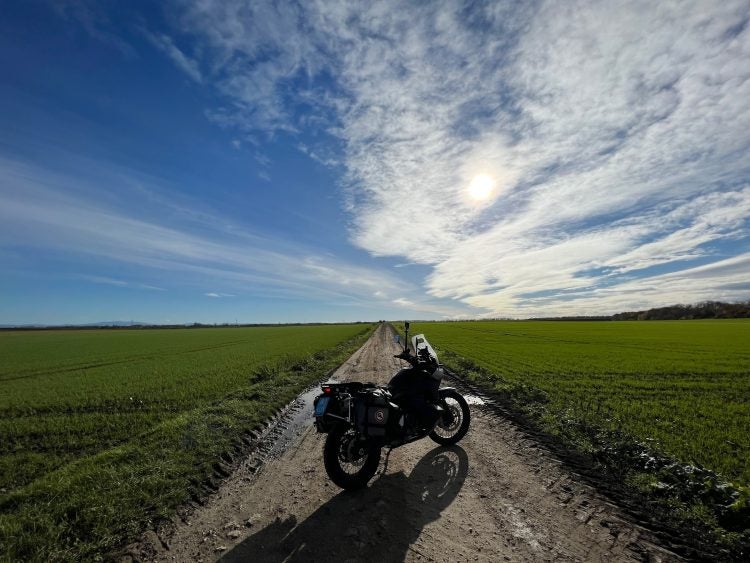
Photo: Paolo
I could feel a bit of vibration on my feet, especially when going above 120 km/h but this might come down to the rear tire’s tread pattern.
I spent about 500 kilometers on the Autobahn, in torrential rain and temperatures around 7º Celsius. I appreciated the simple cruise control system on this highway section; setup is easy and intuitive, with a single toggle switch. It’ll hold your speed as high as 160 km/h (100 mph), which is even faster than the 1290 SAS system (which will only hold 150 km/h).
The second day was cold and rainy again; I rode 400 klicks to the beautiful city of Dijon, hoping to get to better weather. Well, that didn’t work out, but I did get a chance for another few hours’ evaluation of the bike’s updated saddle. When I picked up the bike in Mattighofen, I was a bit worried when I saw there was no Powerparts seat installed on the bike—I figured this would mean some major discomfort, but I was wrong. KTM’s redesign makes the seat more comfortable, but also better suited for off-road riding. It’s 10 mm taller than the 2020 model, but with a special kind of foam that is very soft and gradually becomes harder. This gives you a compromise between seat height and comfort.

Photo: Paolo
The new 890 Adventure has a couple of optional add-ons that came in handy in these cold and wet conditions. I especially appreciated the heated grips, which are 100% necessary for four-season riders. I also appreciated the Connectivity Unit that enables Bluetooth pairing with your smartphone. This let me set my route on my phone and put it in my waterproof pocket, and follow the Turn-by-Turn+ navigation system appearing on my screen.
The third day started with some sun, which was very promising, but soon enough I headed to hilly terrain through France, and temperatures dropped down to 3º C (37ºF) as the elevation climbed… and the rain and wind came back. The bike was more comfortable than the previous 890 model, but by now I was getting tired of the cold and rain. I had to cover 350 km a day in order to reach Lisbon on time, and I had to fit that mileage into shorter daylight hours thanks to the season. Snow was already covering the mountain tops through the Pyrenees, and most of the roads were already closed there. I decided to head towards the Atlantic coast then and hope for better weather and temperatures.

Photo: Paolo
After entering France, I avoided most highways and hit the small side roads, trying to dodge spy photographers As I reached the Bordeaux area, temperatures finally started to rise to a balmy 13º C (55º F), but the rain wouldn’t stop. I had no choice but to cross into Spain and try to find better conditions.
The Basque country was definitely warmer but the rain wouldn’t stop. As mid-day temps reached 15ºC, I decided to hit the TET (Trans Euro Trail) and finally test the bike in its off-road capabilities. The area around Bilbao and Santander is spectacular for offroading, especially the famous Picos de Europa national park, which is kind of a mecca for motorcyclists in Europe. The ride was wet and bumpy but the new bike tires were perfect for the job.

Photo: Paolo
The new adjustable front and rear suspension worked well on this rocky and slippery terrain, with excellent response. The adjustable compression in the front fork helped a lot when tackling the bumpy downhills.
After five days of rain, the sun finally broke through. Perfect timing to test the bike and tires on twisty mountain roads, as I was right at the top of the park. Temperatures at the top were still close to 3º C, but the air gradually warmed and by the time I climbed down the mountains, it was 14º C.
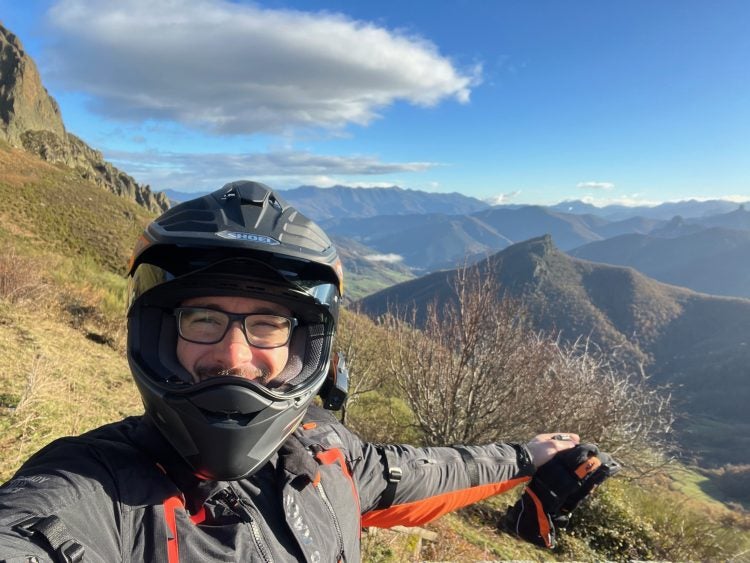
Photo: Paolo
On tarmac, this motorcycle rides very well. Despite the 21″ front tire, the lower center of gravity plays again a massive role in improving the maneuverability of the machine, especially on fast and narrow mountain roads. Tires were perfect, with unlimited grip. These Pirelli Scorpion STR are hands down now my new favorite 50-50 tires.
- Photo: Paolo
- Photo: Paolo
Rally mode is super fun in these conditions. The engine has fistfuls of torque on-tap, with ride-by-wire throttle ready to deliver all that jam right when you want it. It makes it pretty hard not to pop wheelies when accelerating out of turns. With all this power comes great responsibility, as Spider-Man reminded us, but thanks to adjustable electronics we can make sure traction control is always customizable to our needs and road surface.
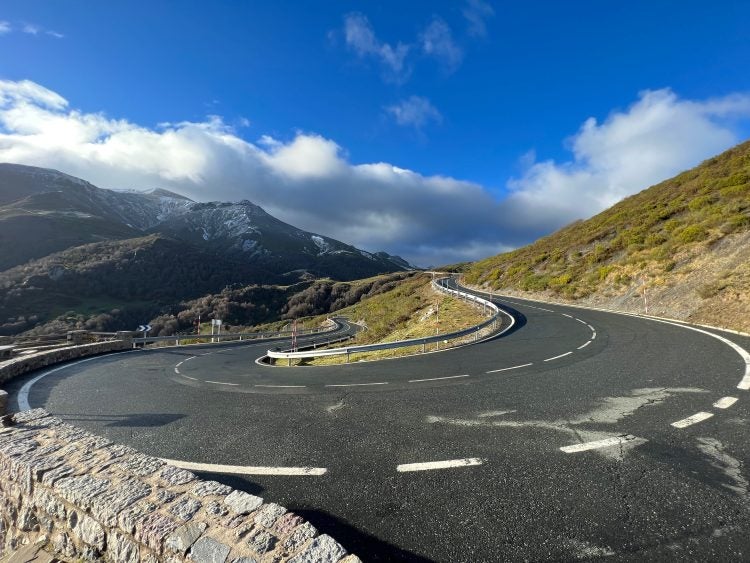
Photo: Paolo
Entering Portugal from inland was a fantastic discovery; I never had been to this part of the country. The Douro Valley (Golden Valley) is the wine region of Portugal. I found myself immerse in an orange glowing rollercoaster, riding up and down all these marvelous vineyards, covered in a layer of changing fall colors. It was the perfect time of the year to ride this part of the world. The air isn’t too hot and there’s less busy tourism, compared to summer. Temperatures were perfect, reaching 18-20º C (70º F) during the day.
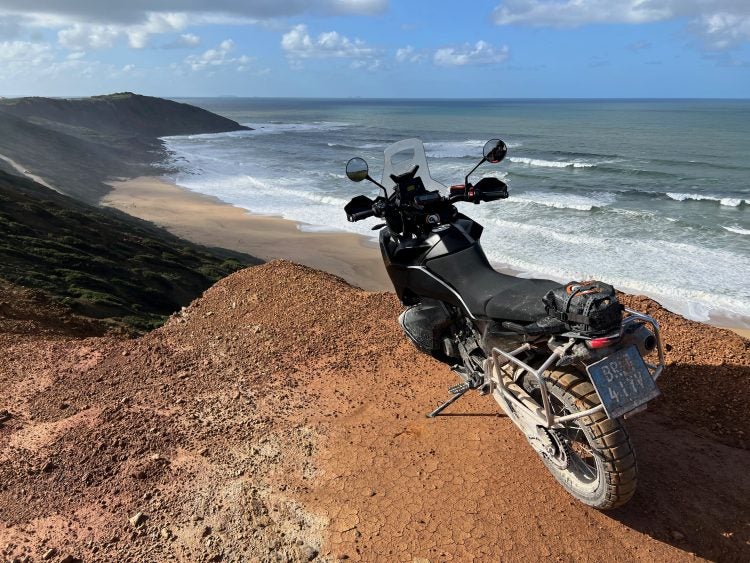
Photo: Paolo
It was a pleasure to ride in these conditions and finally, I could do a bit of fast off-road, through endless wind farms along the hilltops. The new 890 Adventure is simply brilliant in these quick gravel sections; it’s powerful and easy to maneuver.
The new Offroad mode makes everything easier, too. This riding mode has all electronic safety features pre-set for the smoothest off-road experience. The traction control system is configured to allow double the rear wheel spin compared to the front tire, so you can drift the back end and correct corner lines using the throttle. There’s a specific ABS setting for Offroad mode that allows the rear tire to lock up and still keeping the front spinning, while allowing a bit of slip. This is a great feature for non-pro riders like myself.

Photo: Paolo
The Portuguese TET section was super-fun and much faster than the Spanish stretch, which allowed me to get to Obidos, where the bike launch was held, right on time.
My final verdict: KTM delivered another incredible product for performance-oriented customers looking for a middleweight ADV.
The new 790 Adventure was also presented to journalists during the event. This new CFMoto-made bike will have all the new features that the 890 Adventure model has, minus the fancy adjustable Apex suspensions. It will have a significantly more accessible price.
- Photo: Paolo
- Photo: Paolo
- Photo: Paolo
I’m looking forward to seeing how this bike performs once it hits the market later this year.




